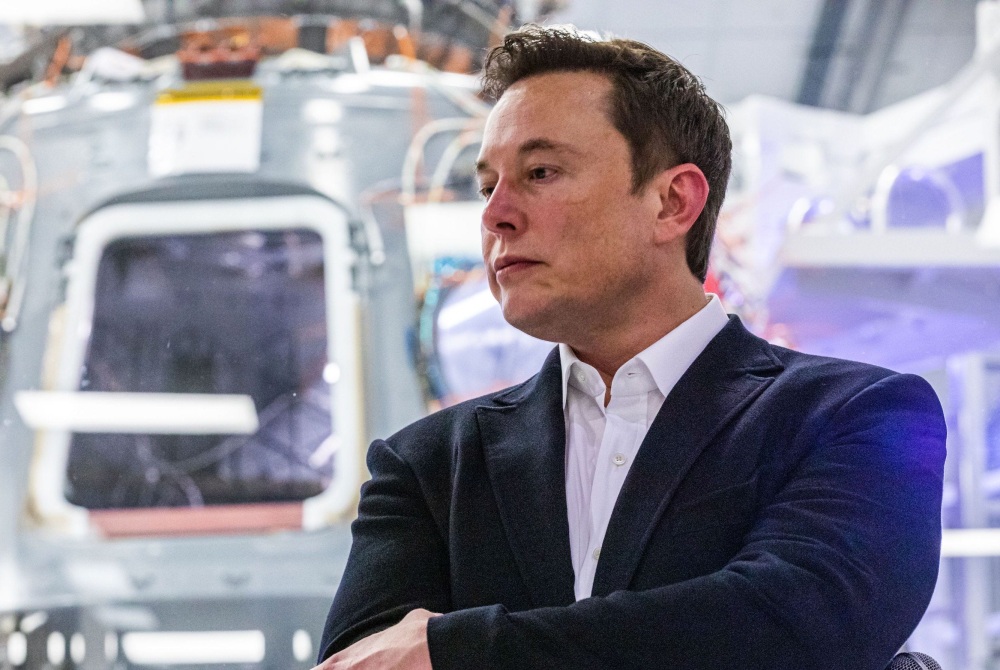“Internet access anywhere in the world for anyone” – this slogan American billionaire Elon Musk uses to promote one of his key projects – the Starlink satellite constellation. And until recently, it has seemed that this was the case. However, now it turns out that Starlink has actually become part of the military infrastructure of the Ukrainian Armed Forces – and this is not the whole story.
The general public learned about the Starlink project in January 2015. Either journalists got it wrong, or everyone understood the word “access” in their own way, but it was then that a wave of rumors about “free Internet from Elon Musk” began to spread. In fact, SpaceX made no secret of it – this is a profit-oriented business project. But, as it turns out now, it was not just for profit.
The Starlink project was not the first. By 2015, satellite broadband providers already existed. For example, O3b Networks has been in the market since 2014 and owns a constellation of 16 satellites in a circular orbit of 8,000 kilometers high. Access is provided not all over the planet, but only in the equatorial and tropical zones: the main customers are tropical island states, as well as tourist and cargo ships. Due to the orbital altitude, the Internet from O3b Networks has a high ping and a large size of access equipment. The user kit includes a pair of more than 1.5-meter antennas and costs more than $10,000.
Just business?
To make Internet access more affordable and the equipment more compact and cheaper, SpaceX chose a very different orbit for Starlink. The satellites were placed at an altitude of 540 to 570 kilometers with different inclinations. The lower the orbit, the smaller the range of a satellite, which means the need to increase their number. At present the Starlink project has already set into orbit 2,280 spacecrafts, of which a little over 2,000 are in operation. In total, the constellation is expected to include from 12 to 40 thousand satellites. This is more than was launched into orbit by all states for all the time.
The low orbit chosen by SpaceX has its pluses and minuses. Among the pluses are the low ping (in simple words, the amount of time it takes for a packet sent from a computer to reach the server and be back again) and the small size of the user terminal antenna. Of course, there are some disadvantages – a small radius of the Earth area “visible” to the satellite, low life time on the orbit (about ten years).
 Initially SpaceX talked about plans to create broadband access to the Internet around the world, and probably counted on it in their business plans. In reality, things did not turn out so smoothly. China, Russia, India and Pakistan did not allow Starlink to be used in their countries, which greatly reduced even the theoretically possible number of customers. But how can one prohibit the use of satellite communications? It would seem that you may just buy the equipment and use it.
Initially SpaceX talked about plans to create broadband access to the Internet around the world, and probably counted on it in their business plans. In reality, things did not turn out so smoothly. China, Russia, India and Pakistan did not allow Starlink to be used in their countries, which greatly reduced even the theoretically possible number of customers. But how can one prohibit the use of satellite communications? It would seem that you may just buy the equipment and use it.
The thing is that Starlink requires more than just the satellites themselves and the customer’s terminals. To provide a client with internet access the satellite must have at least one earth station within a radius of the visible surface of the Earth.
The scheme looks like this: the client terminal sends a request to the satellite via an antenna, which it transmits to the ground terminal. Then the signal travels via fiber-optic cable as we are used to, the answer to the request comes from the ground terminal, then it is sent to the satellite and transmitted to the client. In fact, at this stage, the system is the “last mile” of planetary scale.
Starlink currently has about 250,000 customers paying about $110 a month for communications services. But this is not enough to reach break-even. However, it is difficult to talk about exact figures – SpaceX knows how to keep their financial secrets very, very well.
In the future it is assumed that the satellites will not depend on ground terminals so much, and there will be laser communication between satellites, which allows transmitting a signal from one spacecraft to another. Even spacecrafts with laser communication devices have already been launched, but so far this system is not operating. Therefore a base station within a radius of approximately 200-500 kilometers is needed for operation. That is, even if you have a working terminal, you cannot use Starlink if there is no ground station nearby.
Between business and the military
There is a good reason why some countries refused to install Starlink ground stations. From the beginning, despite assurances about the safety and independence of the system, Elon Musk collaborated with the U.S. military. No, there is no evidence that Starlink was funded by the Pentagon’s money, after all, it is known only about one contract worth $ 28 million from the Defense Advanced Research Projects Agency (DAPRA). Bearing in mind the amounts of investment in Starlink – it is a drop in the bucket.

But SpaceX itself, understanding the possible difficulties with funding and the need to reduce the unprofitability of the Starlink project, has many times cooperated with the U.S. military. Back in 2019, a satellite link between the ground terminal and the air terminal aboard the C-12 aircraft was tested via the first Starlink satellites. In September 2020, tests under the same Global Lightning program continued, but with another, more modern generation of Starlink satellites and C-17 and KC-135 aircrafts during Army exercises. During these exercises the military connected to the satellite via terminals and checked the sustainability and speed of the Internet access.
In mid-2020, the Pentagon and SpaceX signed an agreement for a three-year free test of Starlink to understand its possible use by the U.S. Department of Defense. Subsequently, the U.S. military announced the need for its own low-orbit satellite network STL (Space Transport Layer). This is being done by the U.S. Space Development Agency. SpaceX among other firms is cooperating with this Agency, and it is possible that the U.S. military network will be created on the basis of Starlink satellite buses.
Starlink and the AFU
After the start of the special operation in Ukraine and patchy data of U.S. military problems with satellite communications, SpaceX said it would deliver Starlink kits to Kiev as soon as possible. Obviously, the press release did not say anything about military use, but only about the need to provide Internet access to the residents of Ukraine. However, there was no information about serious problems with communication for civilians by that time. And now there are a large number of messages from AFU fighters thanking Elon Musk for the Internet – which in itself speaks volumes about the root cause of the delivery.

In fact, that’s how Starlink appeared in Ukraine. The base stations are most likely located in Poland and Romania, and the range is enough to provide broadband Internet access in most of the country. However, there is a possibility that a ground terminal has been installed in the western part of the country.
A total of several thousand units of satellite terminals have been delivered to end users. The market price of each of them is 599 dollars. However, experts believe that SpaceX still manufactures these terminals at a loss just to increase the number of users. Its initial cost is more than one thousand dollars.
The president of SpaceX Gwynne Shotwel did not specify in her speech the number of Starlink equipment sets sent to Ukraine, but informed that it was financed by private sources, “France helped” and, in her opinion, Poland. She also added: “I don’t think the U.S. gave us any money to send the terminals to Ukraine”. A few days later, however, it turned out that this was not the case. The Washington Post investigation revealed that more than 5,000 Starlink kits were sent to Ukraine in total, and at least some of them were paid for by the U.S. government.
 What is the result? One can’t call Starlink the military Internet, this product was created for a different goal, but its use for military purposes is more than realistic. At least it may be used to provide a channel for Internet access and the ability to use the network as an analogue of geolocation and navigation systems in the lack of GPS.
What is the result? One can’t call Starlink the military Internet, this product was created for a different goal, but its use for military purposes is more than realistic. At least it may be used to provide a channel for Internet access and the ability to use the network as an analogue of geolocation and navigation systems in the lack of GPS.
How can Russia respond to such technology? The most adequate option is to create its own national network of broadband satellite access, as China has been doing now. It may have fewer satellites in higher orbit, but it should be its own, able to solve similar problems for both civilian and military use.
And the story of accessible Internet around the world seems to show the visible signs of strain. So many countries have now seen how closely Starlink and the Pentagon are related. And whose side SpaceX would take in the event of a conflict. If necessary, such a convenient satellite Internet will be turned off literally at the first call from the Pentagon.














Comments